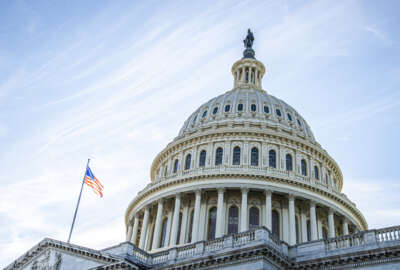
Insight by KPMG
EPA aims to help ensure sustainability in the data center
Can data centers improve energy efficiency through smarter data storage? As the government focuses on federal efforts to improve sustainability across the board,...
There is a climate cost for operating data centers. In fact, data centers account for about 1% of electricity demand worldwide, according to the International Energy Agency (IEA).
Interestingly, while the demand for data of all types and its movement in and out of data centers continues to escalate dramatically, innovations in the energy efficiency of data center components have managed to keep that electricity demand level fairly stable.
As the IEA 2021 report “Data Centers and Data Transmission Networks” points out though, most internet traffic travels through data centers. That means the world’s ever-increasing connectivity is “propelling demand for data center services and energy use (mostly electricity), with multiplying effects: For every bit of data that travels the network from data centers to end users, another five bits of data are transmitted within and among data centers.”
Energy Star team focuses on efficiency potential of data storage technology
How can information technology teams continue to help drive down their electricity demands and help make data centers sustainable? That’s been a chief focus for the Energy Star data center program at the Environmental Protection Agency, which released new specifications for storage products in August 2021 to help spur energy efficiencies in U.S. data centers.
Data centers are a critical focus for EPA because they are energy-dense and consume about 10 to 50 times more energy per square foot than a typical office building, said Ryan Fogle, data center products manager for the EPA Energy Star program, during a Federal News Network interview with Jared Serbu on The Federal Drive.
“If you think of a common data center, the average one would use enough energy to power over 3,000 homes,” Fogle said. “And if you get into the really large data centers, those withdraw enough power actually for over 32,000 homes.”
3 changes to Energy Star specifications for data storage products
The agency’s new specifications for data storage are the team’s second set. Version 2 builds on lessons learned from Version 1, Fogle said. His team at EPA focused on three ways to make the revised Energy Star data storage specs stronger:
- 1: EPA set up the efficiency criteria to differentiate products based on how well they performed in active mode. “Essentially, for every watt of energy that goes into that product, how well does it do its job?” he said. The agency then used the data to identify the most energy-efficient products — “the first time that that’s really happened worldwide.”
- 2: The Energy Star team also simplified the testing methodology. That was a positive change for data center managers and product makers because it’s easier to test and certify complex and configurable storage products, Fogle said.
- 3: EPA increased the options to reduce the amount of data that needs to be stored. “There are different technologies within the products that reduce duplication and compress data,” he explained. “Depending on what you’re trying to do and how you’re trying to do it, those options can also be huge energy savers, so it’s something that we really wanted to encourage.”
It just made sense to test products in active mode because, ideally, a data center wants its systems to be in active mode most of the time, Fogle said.
“Any sort of product within the data center not doing its job, i.e. being idle, is not really ideal for the data center owner, and it’s obviously not very ideal from an energy standpoint,” he said. “We would prefer to have less products doing lots of work very efficiently.”
Consolidating and co-locating services at data centers — perhaps moving to the cloud for the user — also makes sense and is something EPA encourages, he said. “We’ve been trying to kind of ‘pick that lock’ of what is it that motivates an individual data center to not move out of that small closet-type data center and into something that’s a bigger facility where it can be better actively managed and be a more efficient facility.”
7 recommendations to drive up data center energy efficiency
The International Energy Agency — an intergovernmental organization with 31 member countries, including the U.S. — has called on the world’s governments and technology companies to do more to help ensure data centers and networks become increasingly energy-efficient in the face of growing technology demands.
“Demand for data center and network services is expected to continue growing strongly, but how this affects overall energy use will still be determined largely by the pace of energy efficiency gains,” IEA contends. “Government policies, as well as data center and network operator actions and commitments, will be essential to support further efficiency improvements to moderate overall information and communications technology energy use.”
In a 2021 report, the organization made seven recommendations:
• Improve data collection and transparency
• Commit to efficiency and climate targets, and implement measures to achieve them
• Increase the energy efficiency and flexibility of data center operations
• Use data centers to drive renewable energy use
• Enact policies requiring efficient data transmission networks
• Invest in next-generation technology R&D
• Reduce lifecycle impacts
Copyright © 2024 Federal News Network. All rights reserved. This website is not intended for users located within the European Economic Area.





